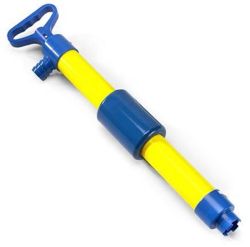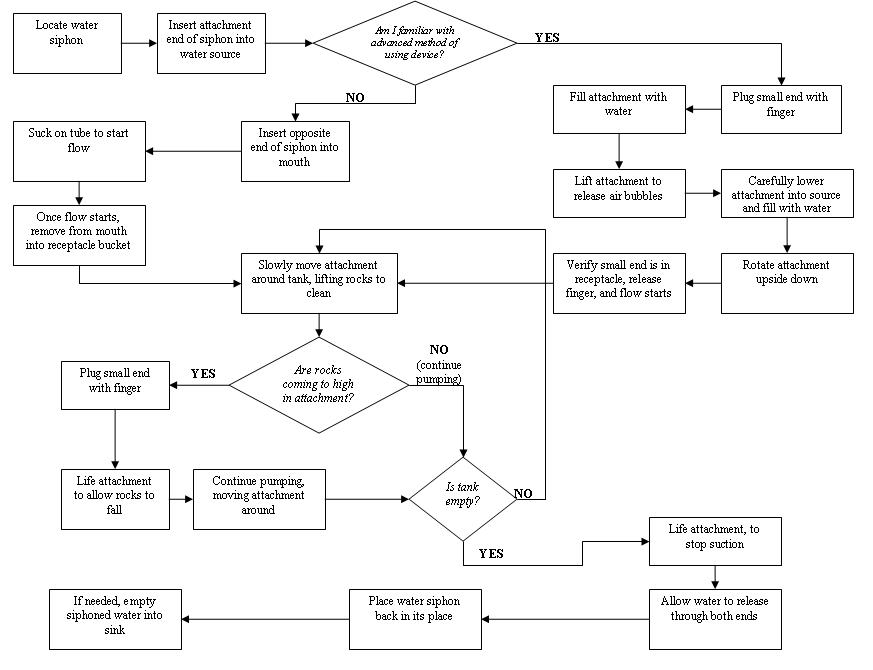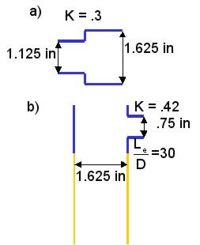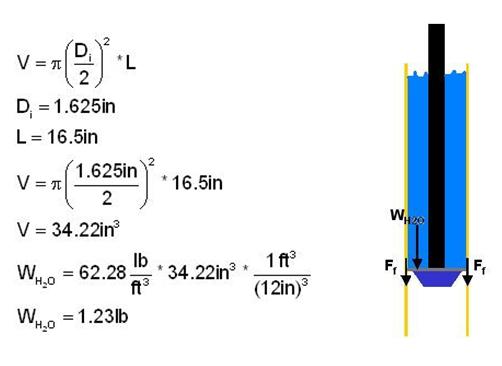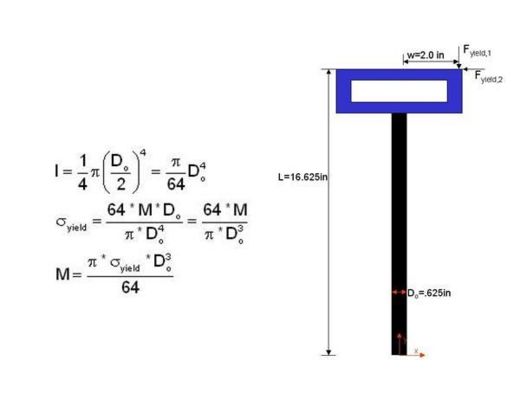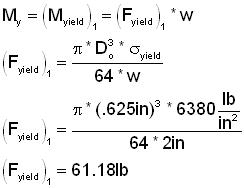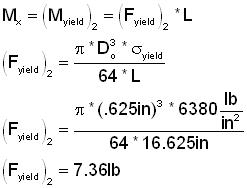Bilge pump
From DDL Wiki
| Line 161: | Line 161: | ||
|- align="left" valign="top" | |- align="left" valign="top" | ||
| - | | ''' | + | | ''' ''' |
| - | | $million || $million || $million || % | + | | $ million || $ million || $ million || % |
|- align="left" valign="top" | |- align="left" valign="top" | ||
Revision as of 16:58, 23 September 2007
This product is a component of the analysis for the aquarium pump project.
Contents |
Product Purpose
[Copy corresponding section from aquarium pump front page once proofread]
Customer Needs
[Copy corresponding section from aquarium pump front page once proofread]
Stakeholders
[Copy corresponding section from aquarium pump front page once proofread]
Consumer Demographics
[Copy corresponding section from aquarium pump front page once proofread]
Product Function
[Copy corresponding section from aquarium pump front page once proofread]
Product Use
In order to demonstrate the use and workings of the pump, our group made videos that illustrate the following product functions:
- Complete Bilge Pump Demonstration
- Partial Bilge Pump Demonstration
- Bilge Pump Operation Description
- Plunger Demonstration
Bill of Materials
Failure Mode and Effects Analysis (FMEA)
The table below details our assessment of the most common failures that we anticipate the bilge pump to experience. This assessment explains how product parts may fail and what the consequences, detectability, and probability of occurence those failures implicate. Addressing these possibilities will allows future designs of this product to be more reliable. Using the Suggested Evaluation Criteria (as found on the FMEA wiki page), we were able to rank the severity from 1-10 (10 being the highest). For the occurrence parameter, we then were able to rank the probability of failure again from 1-10 (with 10 being the highest). Finally, we were able to rank detectability from 1-10 (with 1 being the most detectable). From these three numbers, we were able to multiply them together, which results with the Risk Priority Number (RPN).
| Item and Function | Failure Mode | Effects of Failure | S | Causes of Failure | O | Design Controls | D | RPN | Recommended Actions | Responsibility | Actions Taken | S* | O* | D* | RPN* |
|---|---|---|---|---|---|---|---|---|---|---|---|---|---|---|---|
Handle
| Breaking | Pump will no longer operature | 8 | Shearing at rivet locations due to excessive forces or stresses | 2 | Use strong plastic in handle, especially near rivet locations | 1 | 16 | Strength tests before release of product, upgrade of material if necessary | Materials Engineering/ Manufacturing Engineer | - | - | - | - | - |
Inner Shaft
| Breaking | Pump will no longer operature | 8 | Forces or stresses applied in an incorrect direction (i.e., applied perpendicular to the direction of the rod) | 5 | Use thick walled, strong plastic to make inner shaft | 1 | 40 | Strength tests before release of product, upgrade of material if necessary | Materials Engineering/ Manufacturing Engineer | - | - | - | - | - |
Outer Shaft Cavity
| Clogging | Pump will operate less efficiently and could lose all function | 5-8 (depending on level of clogging) | Sediment buildup, insufficient room for larger objects drawn into the pump such as debris/garbage | 7 | None | 3 | 105-168 | Addition of a grate at entrance to pump cavity that will keep out large sediments or debris | Design Engineer/Manufacturing Engineer | - | - | - | - | - |
Rubber Flapper
| Breaking/Tearing | Fluid able to exit cavity through the entrance - Pump fails to operate | 8 | Rubber tears due to excessive use, or high forces from fluid or debris, or extreme conditions such as heat | 3 | None | 1 | 24 | Thicker rubber in area of attachment to prevent tearing in this area | Materials Engineer/Manufacturing Engineer | - | - | - | - | - |
Rubber Seal (Plunger)
| Wear | Pump will lose efficiency | 6 | Thin rubber at edges wear down due to excessive use or forces | 6 | None | 5 | 180 | Make pump easier to disassemble and inspect | Design Engineer/Manufacturing Engineer | - | - | - | - | - |
| Tear or breaking | Pump will lose efficiency or fail to operate altogether | 6-8 (depending on severity of tear) | Rubber tears due to excessive forces caused by fluid or debris | 3 | None | 2 | 36-48 | Make pump easier to disassemble and maintain | Design Engineer/Manufacturing Engineer | - | - | - | - | - | |
| All Plastic Parts | Corrosion | Wearing of plastic, decrease in strength of parts and possibly pump efficiency | 4 | Plastic deteriorates due to contact with corrosive fluids | 2 | None | 1 | 8 | None | - | - | - | - | - | - |
The highest RPN value for this analysis was 180 which ended up being the rubber seal losing efficiency. This failure received a 6 for severity, a 6 for probability of occurrence, and a 5 for detectability. The result of this failure would be the pump operating inefficiently, if not at all. From this analysis it can be concluded that even the most catastrophic failure is not detrimental to the user with respect to physical safety and wellbeing. The worst case scenario is the pump losing its functionality, causing the user to have to purchase another such pump. Finally, this analysis also shows that there is room for improvement.
Design for X (DFX)
The concept of DFX refers to considering a specific variable X in the design of a product. Some common variables that are considered are ease of: manufacturing, assembly, use, and maintainability.
Design for Manufacturing and Assembly (DFMA)
DFM and DFA refer to analysis and design strategies that aim to understand how a product is made and how the manufacturing and assembly steps in its production can be improved. The DFMA process is advantageous for a designer’s consideration due to the tremendous cost benefits that accompany the simultaneous analysis of DFM and DFA and the interface between the two methods. The use of these methodological tools can reduce costs, decrease labor, cut production times, decrease part counts, and improve the overall design quality.
Design for Manufacturing (DFM)
The primary goal of the DFM process is to analyze the manner in which the component parts of a product are made. By examining how things are manufactured, this process can be optimized so that parts can be produced efficiently and economically while adhering to design constraints. In order to optimize a manufacturing process, cost factors must be taken into account along with time, labor, environmental, and quality concerns. The list below details some ways that DFM could have been or could be applied to the bilge pump:
- Outer and inner shafts are both extruded, which allows for less wasted plastic and ultimately greater efficiency and lower cost in mass production
- Handle, entrance nozzle, exit nozzle, and plunger cap all were injection molded, meaning that almost no material was wasted and the parts were complete after this step leading to lower manufacturing costs and efforts
- Product contains few materials that are difficult or expensive to manipulate in manufacturing process (e.g., rubber, glass, metal)
- Some rubber is necessary as a flexible yet durable material is necessary for both the flap and the plunger/seal
The analysis above suggests that the product has been designed well for manufacturing. The bilge pump design reduces manufacturing costs through its choice of materials, and the usage of plastic for most parts also makes the product durable and useful in its given functions. Also, since a requirement for this part is that it is light so that it can be made to float, the choice of plastic fills this function as well.
Design for Assembly (DFA)
The objective of DFA is to improve product quality and reduce costs by optimizing a product’s design and assembly process. DFA goals are predominantly achieved through simplifying a product, reducing part counts, and designing components that can be easily managed and installed. The follow list describes how DFA may have been, or should be applied to the bilge pump:
- Product design uses sleeve fitting however some fasteners are still used that are most likely unnecessary and should be eliminated
- Tools could also be eliminated if fasteners such as screws and rivets were eliminated
- The sleeve fitting used to attach the plunger/seal to the inner shaft using the plunger cap is a good design and makes assembly more efficient
- Parts are easy to handle and fit together in a logical order
- No two parts are identical so it is easy to keep parts separate and use them appropriately
- The glue used to create a seal between parts with sleeve fittings is likely unnecessary and requires time for application and drying during the assembly process
- Maintaining the product would also be made possible if glue was not used to create a seal between parts
From the above analysis, it is clear that there are several steps that could be taken to improve the assembly process used to fabricate the bilge pump. Because sleeve fittings are used between most parts, the glue and fasteners could likely be eliminated, allowing for easier assembly and future maintenance of the product.
Design for Environment (DFE)
Design for the environment refers to the concept of considering the effect that a product will have on the environment. The entire life cycle of the product should be considered. This includes the manufacturing of the product, the transportation of the product, the use of the product, and end of life.
Economic Input-Output Life Cycle Assessment (EIO-LCA)
One way to assess the effects that a product has on the environment is a process called EIOLCA. This takes into consideration each sector of the economy affected by manufacturing and distributing the product of concern. The economic activity, energy usage, and greenhouse gas emmissions related to manufacture and distribution of the product for each sector is calculated by an EIOLCA software.
For the bilge pump the sector of "Plastics pipe, fittings, and profile shapes" was used to analyze the environmental effects of the product. The current retail price of a bilge pump is $18.00, which corresponds to a retail price of $13.90 in 1997, when the data on the EIOLCA software is valid. This price can be used to adjust values for $1 million of production to show the effect that producing one bilge pump has on the environment. For $1 million worth of the product, the total economic activity for all sectors is $2.28 million and for the top five sectors is $1.315 million. This corresponds to $.164 and $.095 of economic activity from all sectors and the top five sectors respectively per each bilge pump. The total energy required to manufacture $1 million worth of bilge pumps is 11.6 TJ for all sectors, and 6.959 TJ for the top five sectors. This corresponds to .835 kJ for all sectors and .501 kJ for the top five sectors for one bilge pump. The global warming potential for manufacturing and distributing the product is 884 MTCO2E for all sectors and 528.3 MTCO2E for the top five sectors. This corresponds to 63.06 TCO2E produced while manufacturing and distributing one bilge pump from all sectors, or 38.01 TCO2E produced from the top five sectors.
The following table shows the data obtained on economic activity using the 1997 purchaser price model in the EIOLCA software for $1 million worth of "Plastics pipe, fittings, and profile shapes" produced.
| Sector | Total Economic Activity | Value Added | Direct Economic | Direct Economic |
|---|---|---|---|---|
| $ million | $ million | $ million | % | |
| Plastics pipe, fittings, and profile shapes | .644 | .197 | .642 | 99.7 |
| Wholesale trade | .274 | .183 | .232 | 84.7 |
| Plastics material and resin manufacturing | .197 | .045 | .174 | 88.4 |
| Retail trade | .116 | .07 | .112 | 96.8 |
| Other basic organic chemical manufacturing | .084 | .018 | .028 | 33.7 |
| Total for Top 5 Sectors | 1.315 | .513 | 1.188 | 90.3
|
| Total for All Sectors | 2.28 | .99 | 1.59 | 69.7 |
The following table shows the data obtained on energy usage using the 1997 purchaser price model in the EIOLCA software for $1 million worth of "Plastics pipe, fittings, and profile shapes" produced.
The following table shows the data obtained on greenhouse gas emmissions using the 1997 purchaser price model in the EIOLCA software for $1 million worth of "Plastics pipe, fittings, and profile shapes" produced.
Since there is no energy or waste produced by the product itself during use, this stage in the life cycle has no environmental effects. At the end of life, the product can be recycled since it made essentially of only plastic. While energy is used in recycling the product, the beneficial aspects of recycling outweigh this effect. Thus, manufacturing and distribution of the product has the largest impact on the environment. However, the processes and products use already minimize this effect during manufacturing so there are no environmental concerns left to be addressed in future design.
Quantitative Analyses
Fluid Mechanics Calculations
To pass through the bilge pump, the fluid will:
1. Flow into pump entrance
2. Diverge into pump body
3. Move up pump body
4. Go through 90 degree elbow and contraction to pass through pump exit nozzle
In order for the fluid to pass through this system, the pump must provide a certain amount of head, since each of the above steps in the fluid flow is accompanied by a head loss. Most of the head loss in this system comes from what is called minor head losses associated with expansions and contractions in the flow path. The below equations represent the two ways of calculating minor head loss when the mean velocity of the flow is known. Since the velocity of fluid passing through the system may vary depending on the user, the actual head loss of the system cannot be calculated explicitly.
In the first equation, K is the head loss coefficient. In the second equation, f is the friction factor (which varies with velocity of the flow), the quantity Le is the equivalent length of an elbow, and the quantity D is the inner diameter of the pipe. The relevant values for the aquarium pump system are shown in the image to the right.
A certain force is required to operate the pump. A force is required both to pull the handle up, pushing water out of the exit nozzle and drawing new water into the pump cavity, and to push the handle back down again. However, a greater force is needed to pull the handle up. The force required to pull up the handle of the pump is a combination of the weight of the water being moved and the friction between the rubber seal and the plastic wall of the pump cavity.
While the frictional force cannot be calculated to an exact value (since the normal force acting between the rubber seal and the wall is unknown), a typical kinetic friction coefficient can be estimated at about 1.2. The weight of the water can be calculated from the known volume of the pump cavity.
Since the maximum weight of water that needs to be lifted is fairly low, it can be safely assumed that the pump is operable by most people.
Stress Analysis Calculations
Another concern with the use of the bilge pump is the amount of force required to break the shaft connecting the handle and rubber seal of the pump. In the worst case scenario, a force may be applied incorrectly to the handle, and the body of the shaft will act as a moment arm, assuming that the bottom of the shaft is fixed by the pump body. The image to the right illustrates this case. In order to calculate the force required for the shaft to fail, a yield strength was assumed. The shaft was assumed to be made of PVC based on the known characteristics of this and other types of plastic. A common yield strength of PVC was found to be 6.38 ksi based on internet research.
Where M is the moment applied to the shaft, c is a characteristic dimension between the point of force application and the axis of rotation, and I is the moment of inertia of the shaft.
The first mode of failure analyzed is when a force is applied vertically to the handle but is isolated to the side of the handle so that half of the handle distance (w) is the characteristic dimension.
It is not probable that a user would apply this large of a force to the pump handle, so this mode of failure is relatively unlikely.
The second mode of failure analyzed is when a force is applied horizontally to the top of the handle so that the handle length and shaft length combined (L) is the characteristic dimension.
While it is unlikely for the pump to be subjected to the idealized conditions that would allow it to yield through the second failure mode, the force required to break the shaft in this mode is not unreasonable. For example, if the pump was left lying around with the handle fully extended and someone hit or pushed on the edge of the handle, enough force could potentially be applied to break the shaft. Thus, this mode of failure is much more likely than the first.
